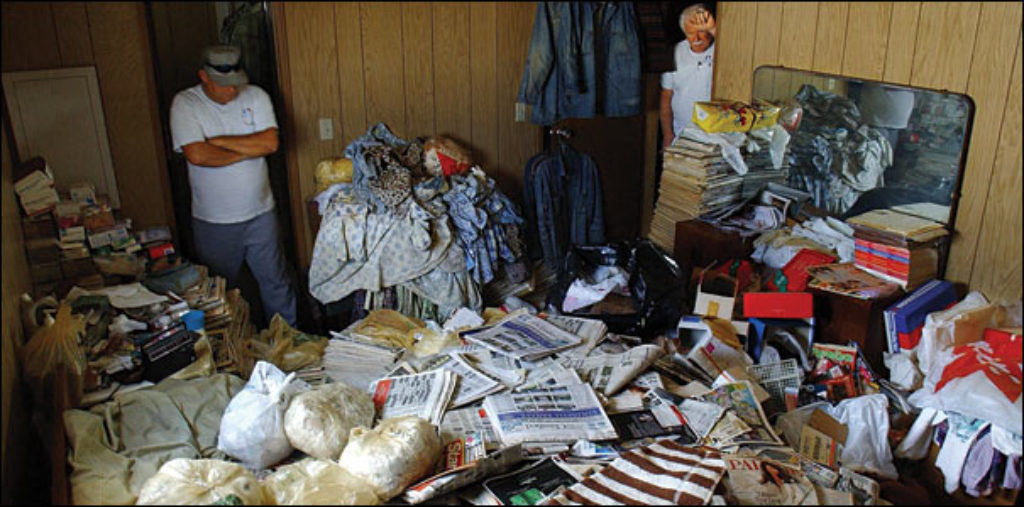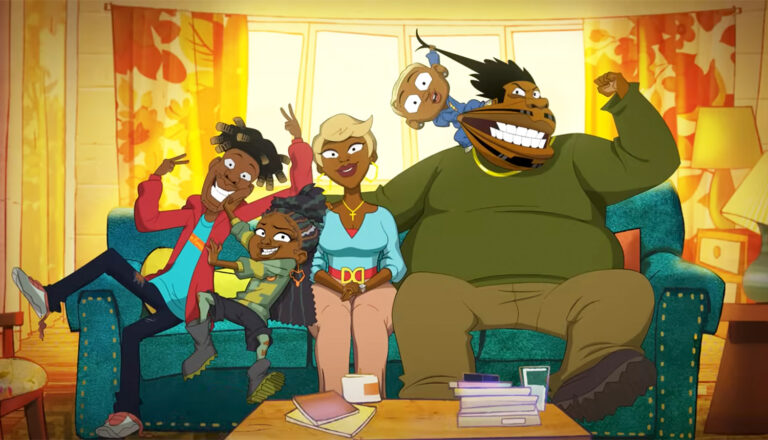
Frieren: Beyond Journey’s End
An elf mage contemplates on connection and regret as she watches her human friends grow old and pass away.

America has a fascination with stuff. And cable TV is replete with proof.
From shows about it ( Pawn Stars and Storage Wars) to shows about people who have more of it (Keeping Up With the Kardashians) to channels that let you buy it from your couch, we’re constantly reminded of our love of it, and how it seems we can never have enough of it.
For most of us, of course, that last statement is hyperbolic. But that’s not the case with everyone. Some people literally can’t store enough stuff. They fill their homes with it. And it’s tearing their lives apart.
A&E’s Hoarders examines the psychological condition of compulsive hoarding in which people, trying to fill a deep-seated, perhaps little-understood need, take on stuff … that takes over their lives. Sometimes the possessions they collect can have some value. Often though, it’s junk valued only by its owners: empty plastic bottles, old newspapers, broken furniture. Soon, their houses are full of it, their yards overwhelmed with it. They carve paths or tunnels to get where they need to go—sometimes surrounded by stuff stacked to the ceilings.
And still they collect more. In watching this show, you get the idea that the hoard has more life than the hoarders. The piles of trash take over properties, forcing bewildered owners into smaller and smaller spaces—a room, a bed, a chair.
Hoarders has some content problems. Episodes can be peppered with profanities (the harshest obscured with bleeps), and the conditions we see can be truly horrifying: Feces may litter a living room. Dead animals may be found in the kitchen. But the biggest issue here is, very simply, subject matter. I don’t know if there’s a sadder, more disturbing program on television.
Each episode gives us a whirlwind trip through two or three hoarders’ stories and potential recoveries. We hear about why they’re on the show in the first place. Sometimes we learn that a social service entity is insisting the place be cleaned up. Sometimes extended family demands an end to it. Interventions are common.
So the hoarders try to stop, to control their compulsions. They allow psychologists to examine them. They welcome teams of experts and cleaners. And then some become resistant. Remember, to them, their living rooms aren’t filled to the rafters with trash, but with treasure—stuff they’ve kept because they want it or need it or love it. Letting go can be hard, painful, even impossible.
By the end of most episodes, featured houses (or at least a few rooms in them) have been cleaned. Piles and piles of stuff are gone. Mice messes have been scrubbed away. The toilet can be used again. And there are smiles to share before the credits roll and the cameras leave. We’re told how the hoarders are, in general, continuing to manage. Are they still seeking counsel? Have their relationships been repaired? Hoarders does what it can to offer its viewers a happy ending.
But it doesn’t feel happy. And I’m not sure what the appeal is to watch week after week. But some families must. The series has survived for five seasons already. Perhaps, like so many reality shows, it helps some people feel better about themselves, in this case their own clutter. Perhaps it serves as a salve to hoarders or families of hoarders: A&E says there are 3 million Americans who have the condition, and even if just a fraction of those folks tuned in it would make for a reasonably successful show. Perhaps there are those who find inspiration here—to help themselves or to help others.
But it’s a lurid, desperate source of inspiration, seasoned with voyeuristic sensationalism.
It seems as though many of the hoarders we see collect stuff to protect themselves—to form barriers between themselves and whatever hardships or realities they can’t deal with. When Hoarders’ cleaning crews come in, they’re tearing off layer after painful layer, leaving them exposed—not just to whatever formed the kernel of their hoarding, but to us too. It’s an important and necessary thing to do in order to finally find healing—but to undergo the process in front of an audience? Is that the right thing to do?
I’m happy these folks are benefiting from so many helpful hands. If Hoarders is a worthwhile conduit to receive that help, I’m grateful. But after watching the show, I didn’t feel grateful. I felt like I was a kid again, barging into an occupied bathroom or seeing a proud man cry.
“Verna/JoAnne”
Verna, 67, comes from a family of hoarders, and her own hoard has gotten so huge that it’s forced her to move her bed to the attic, which she gets to by way of a rickety old ladder. But when the cleaning crew comes, Verna becomes defensive and combative. I just want a new ladder to the attic, she pleads with them. Let me keep my stuff.
“Is it worth losing the relationship [with your daughter] over 10 boxes of yarn?” asks a psychologist.
“Yes,” Verna says.
Eventually, cleaning crews make some headway—but without Verna’s participation, which doesn’t bode well for the future.
JoAnne’s house, meanwhile, is so full of stuff that she spends most of her time sleeping or watching television in a solitary chair she keeps free of clutter. Her plumbing doesn’t work, so she buys new clothes every week and relieves herself in plastic bags. All of this while she watches her 6-year-old grandson during the day. Her family has now threatened to call in the authorities, though, and she takes the message to heart and has the house thoroughly cleaned.
Beyond words such as “p‑‑‑ed” and misuses of God’s name, about a half-dozen vulgarities and obscenities are bleeped during the hour-long show. Decaying mice get screen time, as do rodent feces and a mattress stained by urine and defecation.


Paul Asay has been part of the Plugged In staff since 2007, watching and reviewing roughly 15 quintillion movies and television shows. He’s written for a number of other publications, too, including Time, The Washington Post and Christianity Today. The author of several books, Paul loves to find spirituality in unexpected places, including popular entertainment, and he loves all things superhero. His vices include James Bond films, Mountain Dew and terrible B-grade movies. He’s married, has two children and a neurotic dog, runs marathons on occasion and hopes to someday own his own tuxedo. Feel free to follow him on Twitter @AsayPaul.

An elf mage contemplates on connection and regret as she watches her human friends grow old and pass away.

Netflix takes a classic sitcom, Good Times, and turns it into a vulgar, violent, sexually-charged TV-MA show.

While its protagonist might live a nuanced life, The Sympathizer’s problematic content can’t be described the same way.